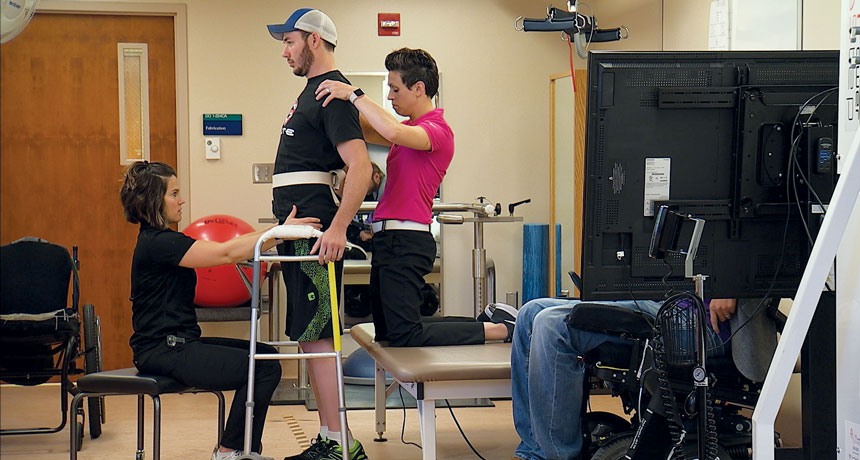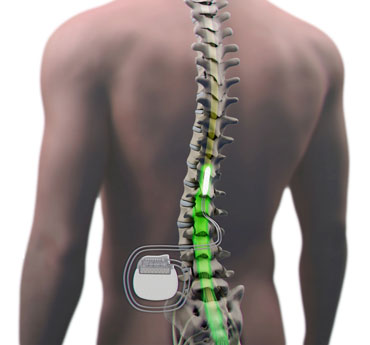A paralyzed man makes great strides with spinal stimulation and rehab
The therapy allows the man to control his leg movements with his mind

STEP BY STEP Intense physical therapy and an implanted spinal stimulator allowed Jered Chinnock to regain the ability to stand and step.
Mayo Clinic News Network
- More than 2 years ago
With the help of a spine stimulator and intensive training, a formerly paralyzed man can command his legs to step again. This achievement, described online September 24 in Nature Medicine, inches researchers closer to restoring movement to paraplegic people.
The therapy allows 29-year-old Jered Chinnock to control his leg movements with his thoughts. “This is highly significant,” study coauthor Kendall Lee, a neurosurgeon at the Mayo Clinic in Rochester, Minn., said in a news briefing on September 20.
A snowmobile wreck left Chinnock paralyzed, unable to move or feel sensations below the chest. His initial rehabilitation focused on acclimating to life in a wheelchair. But three years after the accident, he enrolled in an aggressive study designed to get him moving.
Surgeons implanted a stimulator that zaps nerve cells on the spinal cord below the site of Chinnock’s injury. With the stimulator on, therapists led Chinnock through exercises to reactivate muscles and nerves. Over two weeks of training with the stimulator, he could stand and, while lying on his side, make voluntary steplike movements. Those results were published last year in Mayo Clinic Proceedings.

Chinnock’s progress echoes positive results seen by other researchers, including neuroscientist Susan Harkema of the University of Louisville in Kentucky. She and colleagues have also used spinal stimulation to help paralyzed people move. Two of four patients who have received the therapy are now able to step across the ground with assistance, Harkema and colleagues report online September 24 in the New England Journal of Medicine. Along with her team’s findings, the results described in Nature Medicine give heft to the approach. That replication is “really important and really exciting.”
Lee and colleagues suspect their patient has some residual nerve cell fibers that span the damaged part of his spine. It’s not clear whether a similar approach would work for paraplegic people with different sorts of spine damage. “You can’t answer those questions” until more people are tested by different teams of researchers, Harkema says.
It’s also unclear how physical training regimens should be designed to help people regain movement, Zhao said. “We are very early in the research stage,” she says. During the study, Chinnock attended 113 rehabilitation sessions, conducted while he was lying down, sitting, standing and stepping with help from a trainer — “a very rigorous and intensive protocol,” Zhao said in the briefing. The researchers don’t know whether these improvements will persist.






